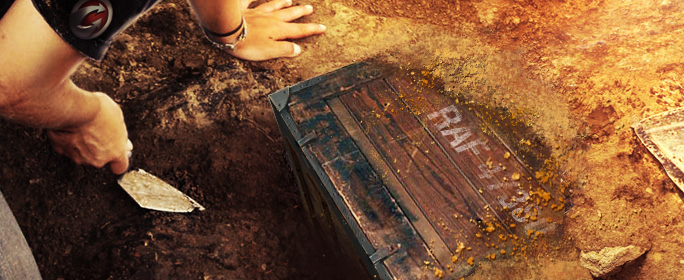-
![LANG-CODE-KEY]() LANG_NAME_KEY
LANG_NAME_KEY

I arrived in London this morning, took the train to Paddington, and then the tube to Kensington. I checked my luggage with hotel concierge and ventured out into the city. A life-time ago, as a starving graduate student, I walked these same city streets, writing in the reading room of the British Library by day, and shivering in a tiny garret apartment near Swiss Cottage by night. I’m delighted to be back. Samuel Johnson wrote that when a man tires of London, he has tired of life. Honestly, I don’t think I’ll ever grow weary of this metropolis. Our first film shoot isn’t scheduled till Sunday, so I decided to spend Saturday afternoon at the Imperial War Museum.
The Imperial War Museum is an imposing edifice of white stone with a classical columned portico and a soaring copper-clad dome. Two enormous 15” guns from the battleships HMS Ramillies and HMS Roberts guard the entrance. The entire complex is set back from Lambeth Road in a fine park surrounded by a wrought iron fence. Originally built as a hospital in the 19th century, the building was enlarged and expanded in the 20th century to accommodate its new mission. The entrance atrium contains an impressive collection of weapons and vehicles, including a Grant tank used by General Montgomery and a V2 rocket. Suspended from the ceiling is a Spitfire Mark 1A which flew in the Battle of Britain, a Sopwith Camel, a P-51 Mustang, a Focke-Wulf FW-190A-8, and a Heinkel HE 162. I spent hours wandering through the galleries and reading the exhibits. An amazing museum.

On Sunday I took the train with our film crew up to Leeds, in order to interview geophysicists Dr. Adam Booth and Dr. Roger Clark. Dr. Clark has worked with David on various WW2 aircraft recovery projects in the UK since the early 1990s. Roger’s enthusiasm for aircraft recovery rubbed off on Adam, who in 2004 was about to commence PhD research under Dr. Clark’s supervision. The two men became David’s key advisors and friends -- designing surveys, interpreting data, suggesting commercial contractors, and procuring equipment from the University and local companies. Adam even accompanied David to survey at Mingaladon in the Fall of 2004. Adam scanned a 100 x 190 meter area on the airfield, and found large areas of electrically conductive material underground, in the location and at the depth reported by the eye witnesses whom David interviewed 1998-2002. David made plans to excavate. Unfortunately, on the very day he began to dig, soldiers showed up at Mingaladon and ordered him to halt work. The Prime Minister had just been arrested for fraud. Since David’s agreement was with the Prime Minister, he fell under a cloud of suspicion and was detained in his hotel for five weeks before they let him go!
 |
 |
Both Dr. Clark and Dr. Booth spoke on camera about their experiences working with David over the years. Like David, they are eager to learn what, exactly, is buried at Mingaladon. They will be bringing a battery of geophysical gear to help image the site and solve the mystery, including a Geonics EM34-3, Syscal Electrical Resistivity Tomography (ERT), a Bartington 601-2 Magnetic Gradiometer, Geometrics G858 Magnetic Gradiometer, and a Differential GPS (DGPS) system. I’ll leave it to Dr. Booth in the next entry to explain the discipline of geophysics, its application to our project, and the results of his 2004 survey at Mingaladon.